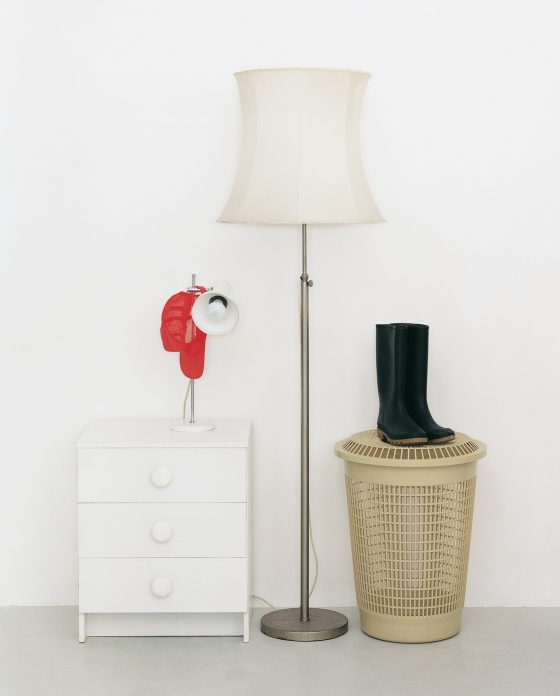to overview
Christopher Muller
The Measure of All Things - On the Relationship between Photography and Objects
from »The Measure of All Things«, Edition Stemmle, 1998
I would like to focus on how my still life photography invites both a practical, everyday reading and an aesthetic interpretation. It is difficult to ascertain to what degree the medium of photography facilitates interplay between these two sensibilities or to what degree it is to be identified with the nature of the composition.
The following aspects of the photographed still life could be said to place it firmly within the grasp of our practical sensibility. Photography has the greatest immediacy of all artistic mediums to non-aesthetic reality just as the banal, everyday objects are not normally associated with aesthetic experience. Photography gives the objects, which are reproduced in close to their original size and colour, a clearly defined effect of recognition. This sense of familiarity is confirmed by the camera angle, which approximates to a confrontation with the objects much as in everyday life. Objects are not subverted to achieve an effect of estrangement but are usually placed in a non-hierarchical row – a polite, orderly bus-queue of objects. There is no great illusion of depth to draw the viewer into the picture. The following aspects could be said to prompt more aesthetic consideration of the image. Although the individual photographed objects are all instantly recognizable, the arrangement as a whole does not correspond to an immediately recognizable situation. This artificiality implies intentionality and differentiated looking. The viewer becomes the focus for the concentrated observations of the camera. A non-linear, pictorially complex composition based on formal characteristics and associations suggest a possible structural interpretation of the picture but there is no easily identifiable hierarchical pattern of perception and understanding. The relative simplicity of the object’s design makes it possible to establish clear formal correspondences, and the object’s lack of symbolic significance allows the viewer greater freedom to make associations of his own. The convincing illusionism of photography and the neutrality of the photograph’s surface foster dialogue between the viewer and the objects.
Neither the practical, everyday nor the aesthetic reading can be sustained for long before the one inevitably shifts into the other. In the search for structural content, the photographed objects seem to dissolve into their constituent formal characteristics. Alternatively, no matter how significant a chair, with its specific formal qualities, may be within the composition, it may always also be perceived as a potential place to sit down. These shifts sensitise and refine our perceptions of the objects. The viewing process reflects moments of self-awareness – as emotional content is inevitably linked to the responses and projections of the viewer.

From Head to Toe, 1991/92, 181 x 145 cm, C-print behind perspex